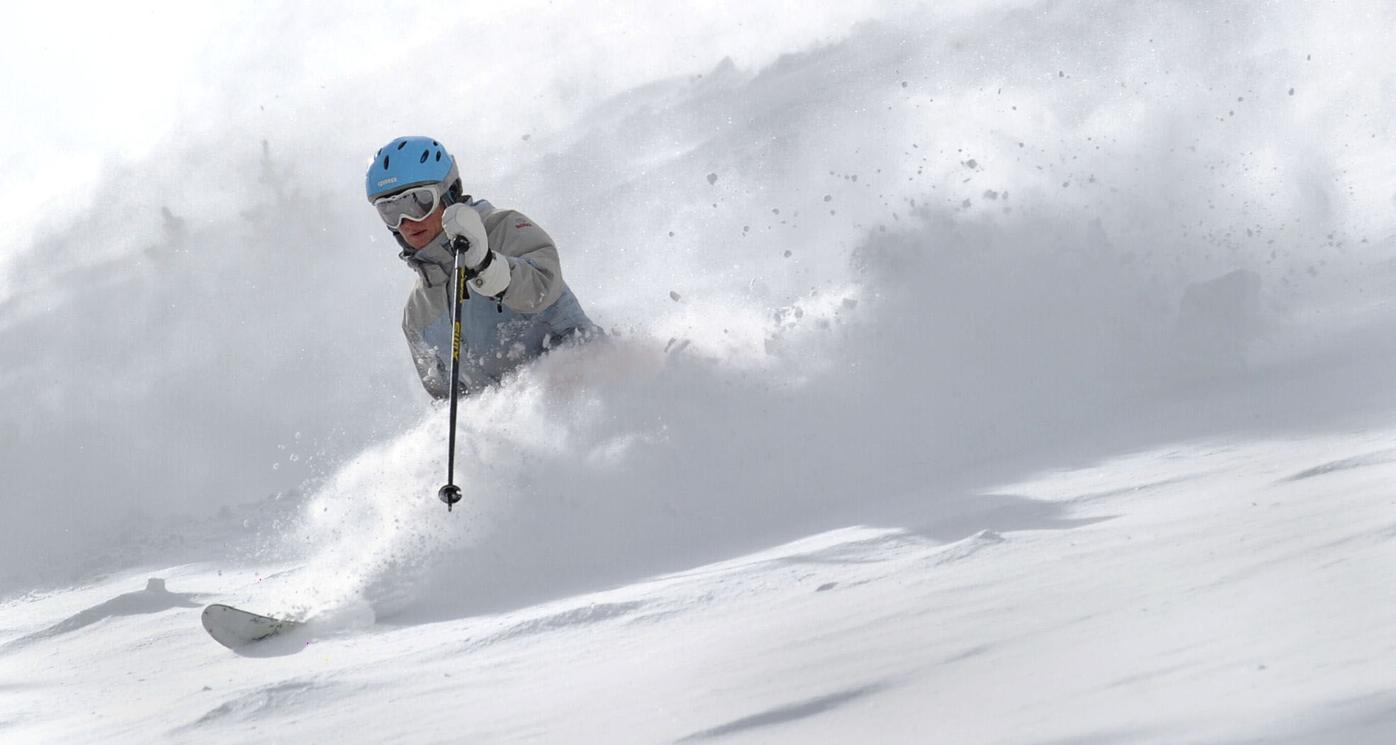The summertime powder hound will take any sign of hope. For example: mushrooms.
Said Colorado skiing’s trusted weather man Joel Gratz: “People have come to me and said, ‘When it’s been a really rainy summer and the mushrooms are great, the ensuing winter is really good, right? Is that true?’”
Not exactly, Gratz is sorry to report. OpenSnow’s founding meteorologist can cut historic data in several ways — some wet and mushroom-filled summers were followed by snowy winters, others not so much. The whims of Mother Nature are many and ever unpredictable.
To forecast her ways months in advance is “pretty tough,” Gratz said. “And by tough, I mean somewhat absurd.”
But in the months leading up to winter, she does drop hints. Look not to the mushrooms, but to El Niño and La Niña.
And, specifically for this winter, look to La Niña.
Another pattern of cooling across parts of the Pacific Ocean is projected for the season. This would be a third straight year for the pattern — a rare “triple dip” that OpenSnow reports as having happened twice since 1950.
What does that mean for skiing in the West?
let pathVariable;
let pathVariable2;
function handleUrlPathSegment() {
const fullPath = window.location.pathname.toLowerCase();
if (fullPath.includes(‘/business/’)) {
pathVariable = ‘business’;
pathVariable2 = ‘Business Newsletter’;
} else if (fullPath.includes(‘/outdoors/’) || fullPath.includes(‘/outdoor/’)) {
pathVariable = ‘outdoors’;
pathVariable2 = ‘Outdoors Newsletter’;
} else if (fullPath.includes(‘/opinion/’)) {
pathVariable = ‘opinion’;
pathVariable2 = ‘Opinion Newsletter’;
} else if (fullPath.includes(‘politics’)) {
pathVariable = ‘politics’;
pathVariable2 = ‘Politics Newsletter’;
} else {
pathVariable = ‘am-update’;
pathVariable2 = ‘AM Update Newsletter’;
}
console.log(`Current path: ${fullPath}`);
console.log(`Path variable set to: ${pathVariable}`);
console.log(`Path variable 2 set to: ${pathVariable2}`);
applyNewsletterName(pathVariable2);
return { pathVariable, pathVariable2 };
}
function applyNewsletterName(newsletterName) {
if (document.readyState === ‘loading’) {
document.addEventListener(‘DOMContentLoaded’, function() {
updateNewsletterElement(newsletterName);
});
} else {
updateNewsletterElement(newsletterName);
}
}
function updateNewsletterElement(newsletterName) {
const newsletterElement = document.getElementById(‘newsletterName’);
if (newsletterElement) {
newsletterElement.textContent = newsletterName;
console.log(`Updated #newsletterName element with: ${newsletterName}`);
} else {
console.warn(‘Element with ID #newsletterName not found in the DOM’);
}
}
function setupFormSubmitListener() {
function getFormattedDate() {
const now = new Date();
const timestamp = now.getTime();
console.log(‘chris: Using Unix timestamp’);
console.log(‘chris: Current time:’, now);
console.log(‘chris: Unix timestamp (ms):’, timestamp);
return timestamp;
}
const formattedDate = getFormattedDate();
var profile = window.blueConicClient.profile.getProfile();
profile.setValues(‘newsletter_category’, pathVariable);
profile.setValue(‘newsletter_signup_date’, formattedDate);
window.blueConicClient.profile.updateProfile(this, function() {
});
}
handleUrlPathSegment();
Success! Thank you for subscribing to our newsletter.
function subscribeSuccess() {
var nsltrform = document.querySelector(“#nsltr”);
var nsltrSuccess = document.querySelector(“#successnsltr”);
nsltrform.classList.add(“hideblock”);
nsltrSuccess.classList.remove(“hideblock”);
}
function validateEmail(email) {
return String(email)
.toLowerCase()
.match(
/^(([^()[]\.,;:s@”]+(.[^()[]\.,;:s@”]+)*)|(“.+”))@(([[0-9]{1,3}.[0-9]{1,3}.[0-9]{1,3}.[0-9]{1,3}])|(([a-zA-Z-0-9]+.)+[a-zA-Z]{2,}))$/
);
}
function validateEmailAddress() {
const result = document.querySelector(“#result”);
const email = document.querySelector(“#email”).value;
result.innerText = “”;
if(validateEmail(email)) {
newsletterSubscribe(email);
} else {
result.innerText = ‘The email entered: ‘ + email + ‘ is not valid :(‘;
result.style.color = “red”;
}
return false;
}
function newsletterSubscribe(email) {
fetch(“https://services.gazette.com/mg2-newsletters.php?action=subscribe&site=denvergazette.com&emailPreferenceId=60&email=” + email, {
method: “POST”
}).then(res => {
console.log(“SUCCESSFUL POST”);
subscribeSuccess();
});
}
#nsltr {
min-width: 100%;
margin: 10px 0;
padding: 10px 20px;
background-color: #2076b3;
background-image: url(https://static.gazette.com/emails/circ/Audience%20Images/dg%20outdoors%20sign%20up.png);
background-size: cover;
}
#nsltr-header {
color: #fff4f4;
}
#nsltr-body {
text-align: center;
color: ;
}
#nsltr-button {
margin-top: 5px;
}
#successnsltr {
min-width: 100%;
margin: 10px 0;
padding: 10px 20px;
background-color: green;
text-align: center;
color: white;
}
#successnsltr a {
color: white;
}
.hideblock {
display:none;
}
h6 a {
color: black;
text-decoration: none;
padding: 5px;
background-color: #bbccdd;
font-weight: 600;
}
@media only screen and (min-width: 768px) {
#nsltr {
background-image: url(https://static.gazette.com/emails/circ/Audience%20Images/dg%20outdoors%20sign%20up.png);
background-size: cover;
}
}
“During La Niña seasons, the best correlation with more snowfall is in the northwest,” Gratz said. “So Montana, Wyoming, northern Idaho, Washington, British Columbia. (The) Colorado correlation is not as strong.”
That, he said, is due to the state geographically falling in a “tricky” spot for north- and south-trending storms. He characterized the past two winters under La Niña as a mixed bag across Colorado’s slopes — “some good parts, some bad,” he said.
Snow was below average last winter, “but if you hit it at the best times, you might’ve felt like we had a great season,” Gratz said. That’s if you hit it when storms favorably trended, though briefly. That speaks to atmospheric variability, the way the wind blows.
“Some of this does come down to what meteorologists call internal variability,” Gratz said, “or we can just say dumb luck.”
OpenSnow’s historic analysis provides hope.
“[W]hen clusters of two or more La Niña winters have occurred, at least one of the winters ended up being a ‘big winter’ across a large portion of the West,” read a report approaching fall. “While there is no scientific reasoning for this, if history is any indication, then the odds of ’22-’23 being a good winter are decent.”
Gratz’s advice is simple.
“The secret to getting the most powder days is going out as often as you can,” he said. “If you’re out there, you have a chance to catch it.”





